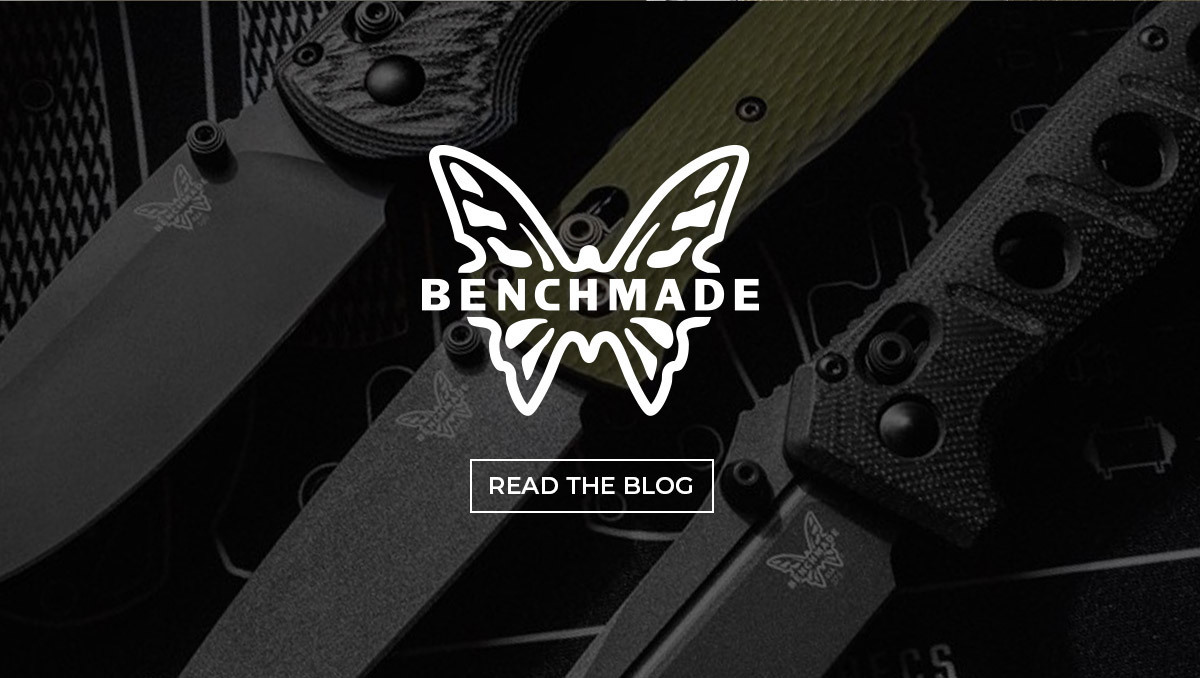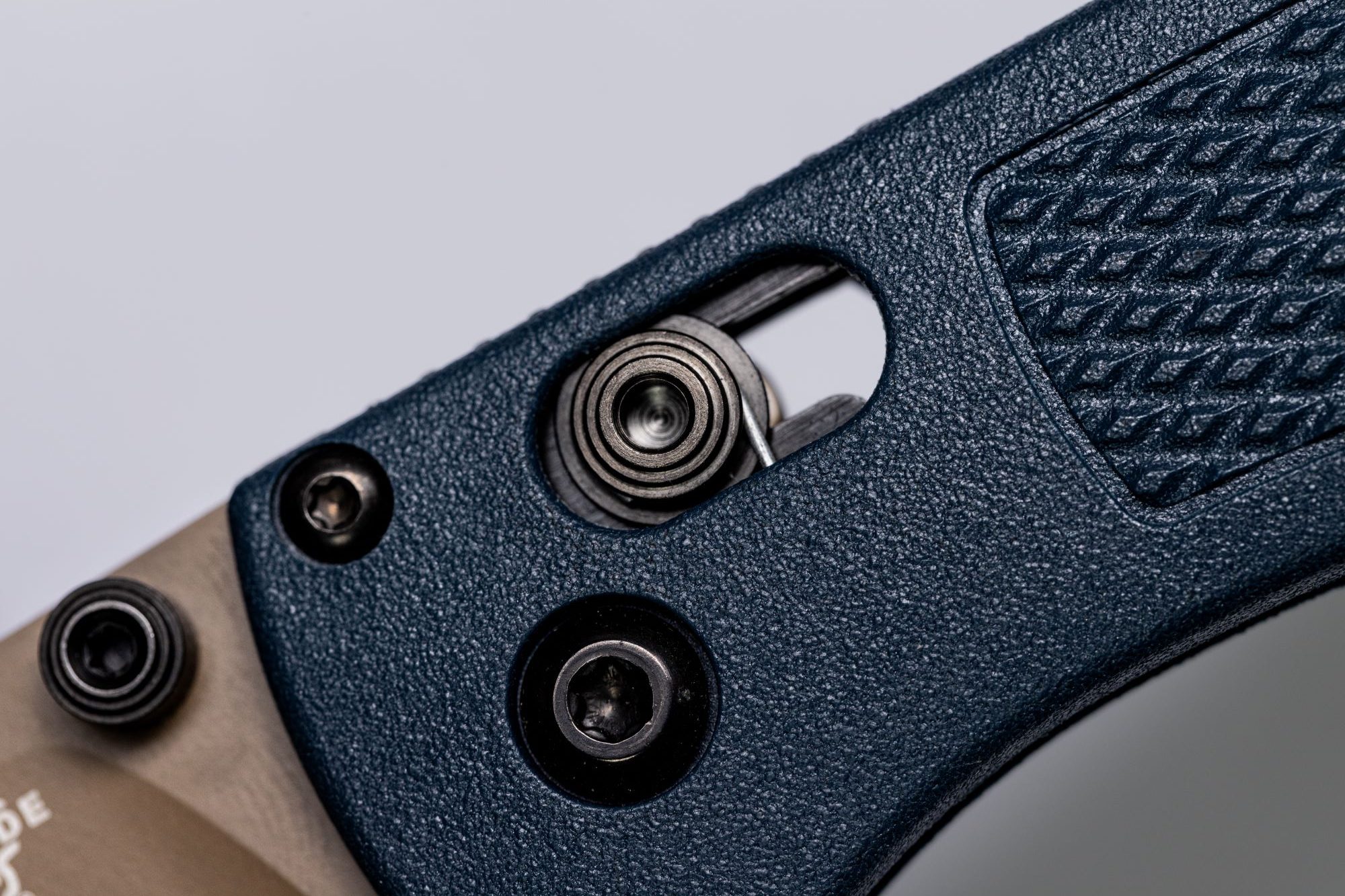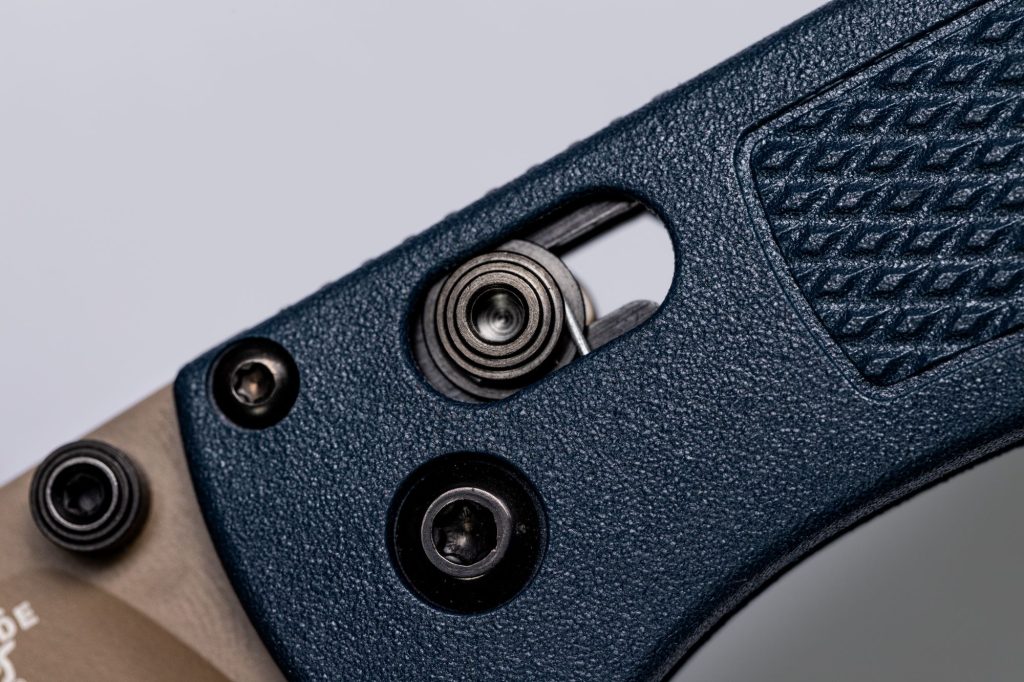
A New Type of Lock – The History of the Crossbar Lock
If you look at the knives available today, you’re bound to notice the abundance of locking mechanisms manufacturers use to keep their folders from closing on your fingers. Since the invention of the lockback, locking blades have been a staple of folding knives. But it wasn’t until recently that the envelope was pushed, and new lock types began popping up everywhere.
Bill McHenry, the designer of the iconic Benchmade Infidel OTF knife, and Jason Williams—both custom knifemakers—were at the center of this explosion. Not long after Michael Walker invented the Linerlock in 1981, they revolutionized the knife industry with an extremely effective, user-friendly design. Benchmade purchased the rights to use said design in 1988 and gave it its most recognizable name: the AXIS Lock.
The first production knife to feature the AXIS Lock was Benchmade’s Model 710. The lock was a hit, and now all of Benchmade’s brand-defining folders, like the Bugout, the 940 Osborne, and the Griptilian, proudly feature it.
Thus began a movement that would later be dubbed the Crossbar Lock by the knife community, simplifying what has since become a complex array of locks with unique names that function similarly. Before I get into Crossbar Lock variations, let’s look at how it works and answer the question: “What makes it so spectacular?”
Benchmade’s AXIS Lock – What it is and How it Works
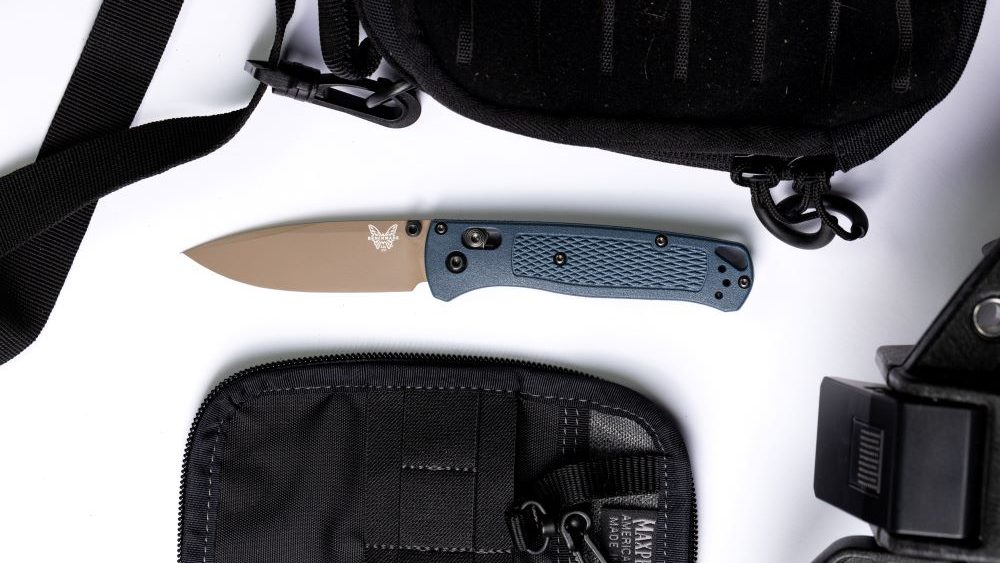
The principle behind a blade lock is simple: Put something in the way of the blade tang so it can’t close. The Linerlock bends in and wedges against the tang to secure the blade open, and the lockback holds the tang with a spring-loaded hook.
McHenry’s and William’s method was to wedge a bar between the back of the tang and the handle liners. Sliding the bar away from the blade removes the obstruction, and the blade can close. Mix in some spring tension and something to grip with your fingers, and voilà! You have an ambidextrous, one-hand-operated, extremely strong knife lock—and that’s what makes the AXIS Lock spectacular.

So spectacular, in fact, that Spyderco engineered a new lock that functions on the same principle.
Spyderco’s Ball Bearing Lock – What it is and How it Works
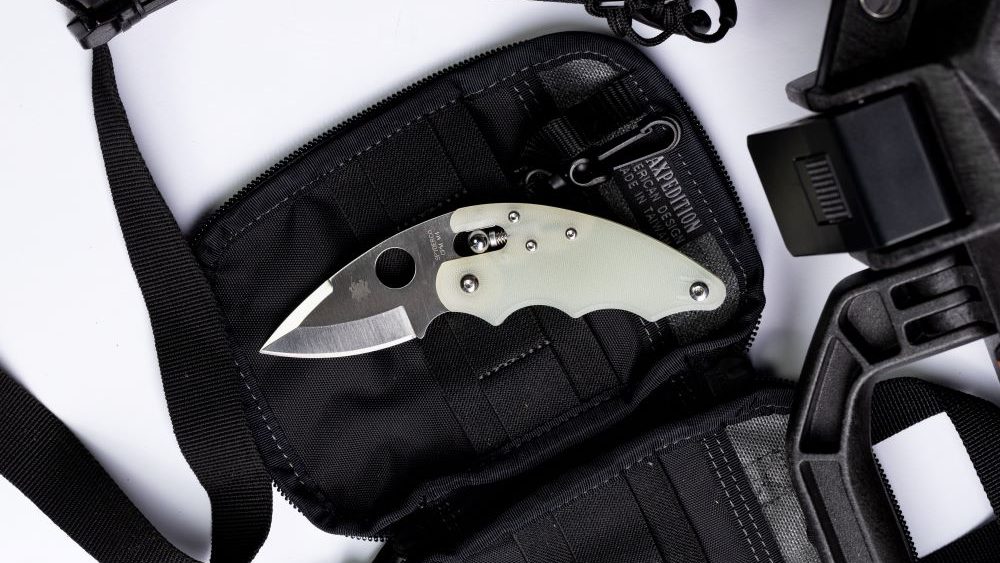
Meet Spyderco’s Ball Bearing Lock. At a glance, it’s nothing like the AXIS Lock—you might even argue that it’s not a Crossbar Lock.
But hear me out.
The AXIS Lock uses a pair of omega springs to wedge a metal bar between the blade tang and the handle liners. The spring provides a detent to keep the knife closed in your pocket and automatically engages the lock when the blade is fully opened. In principle, the Ball Bearing Lock is the same: A spring pushes a ball bearing up between the blade tang and the handle, functionally achieving the same thing.
The biggest difference between the two locks is their ease of use: There’s no easy way to disengage the original Ball Bearing Lock. Spyderco has since refined the system. You’ll usually see it as it appears on the Manix 2, where the ball has been shrunk Butterfly Knife down and housed in a plastic cage that has grippy finger pads.
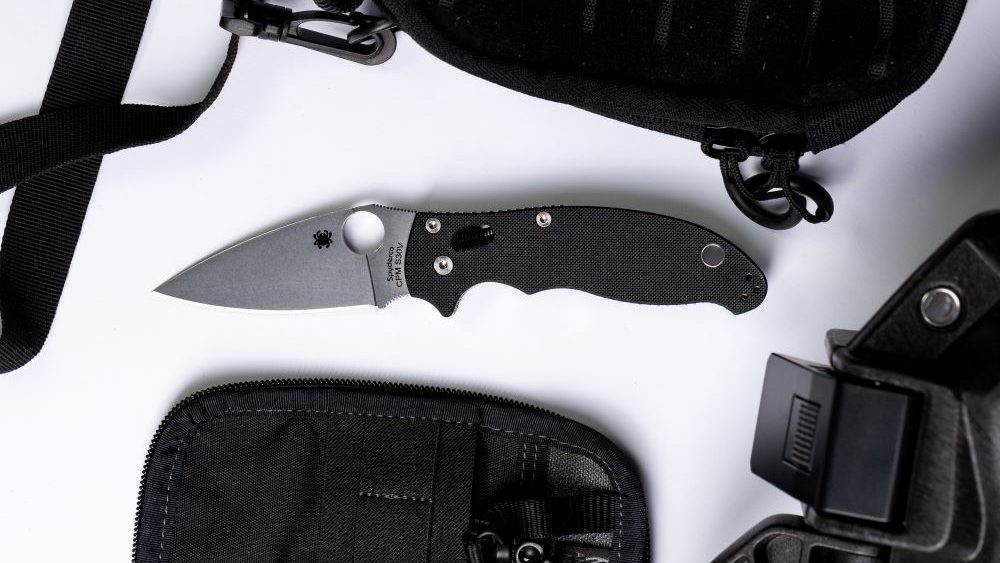
The AXIS Lock Patent Expired – And All Crossbar Locks Broke Loose
Other locks, like SOG’s Arc Lock on the X-Ray Vision knife, employed similar technology, but it wasn’t until 2018, when the patent on the AXIS Lock expired, that the Crossbar Lock really exploded. Companies raced to make their own version, naming the mechanism something new and changing little things. All the names and brands can get confusing, so I’ll break it down for you. Note that this isn’t a comprehensive list, but it’s pretty close as of the publication of this article. More companies are making new Crossbar Lock knives all the time, but these are the current main ones:

- AXIS Lock: Benchmade – The original: a simple bar with two round, stepped ends connected to omega springs. I already mentioned some AXIS Lock staples above. Some other excellent options are the Bailout and the new Full Immunity.
- XR Lock: SOG – It uses polymer oval switches with stair jimping. I like the Terminus XR for something small and the Seal XR for something big.
- ABLE Lock: Hogue – Has a more aggressively jimped tri-step design. I love the Hogue Deka, and you can’t go wrong with the Sig K320, either.
- A-Lock: Acta Non Verba (ANV) – Has a red dot in the center of the grip pads for visibility. Check out the ANV A100 if you want a knife that uses it.
- Clutch Lock: Kizer – Features holes in the liners that allow you to customize the tension on the omega springs. The Kize Drop Bear is the knife of choice if you want a Clutch Lock—it’s the only model that has one (for now).
- XT Lock: KUNWU – Has a stepped ramp for easy gripping and covers the hole completely when closed. If you’re looking at the XT Lock, you’re looking at the KUNWU X-TAO.
- DuraLock: Kershaw – Has a rounded triangle milled in the finger grips. The Iridium is where it’s at with the DuraLock, but I also like the Heist.
Other companies also use the Crossbar Lock but decided on a more generic name like Slide Lock, Pivot Lock, or Bar Lock. Here are a few that use one of those names:

- Gerber
- Schrade
- Bestech
- Giant Mouse
- Bear Ops
- Real Steel
- Oknife
- The James Brand
- Tuya Knife
- TB Outdoor
Without a doubt, all the locks listed above are Crossbar Locks. Some locks that are, with a doubt, also Crossbar Locks are Spyderco’s Ball Bearing Lock and Microtech’s Ram-Lok. They share two main differences that separate them from the pack: They use a coil spring instead of omega springs and don’t have a crossbar.

The first point is made mute by Benchmade’s use of a coil spring in two of their AXIS Lock knives: The discontinued Anthem, with a vertical spring like the Ball Bearing Lock and the Ram-Lok, and the recently released Narrows, which uses a specialized coil spring that sits parallel to the crossbar. So, you argue the second point. My rebuttal is both locks still shove a piece of metal between the blade tang and the handle. So, functionally, they’re basically identical.
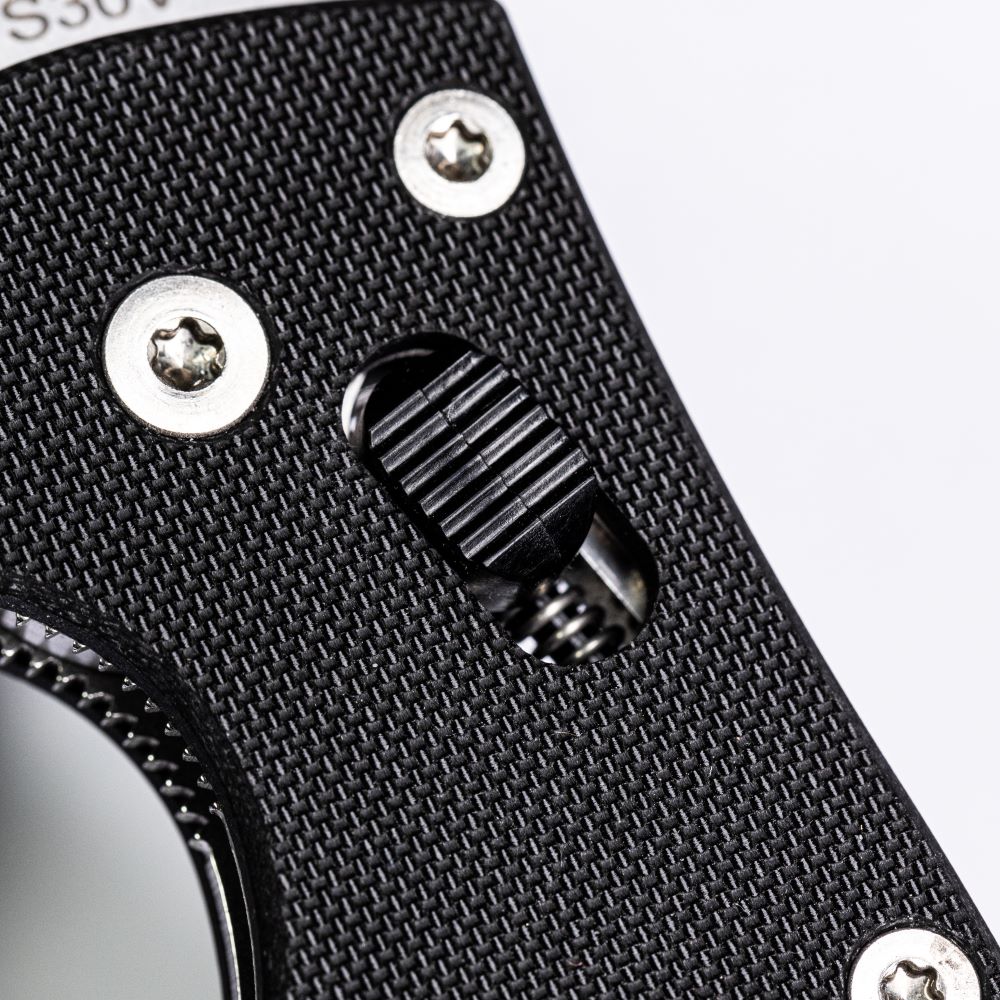


Conclusion
With so many different names, it’s no wonder the knife community banded together and lumped all these locks under one name: Crossbar Lock. Bill McHenry and Jason Williams couldn’t have known the impact of what they were about to create when they sat down to design this hugely popular system. You have them to thank, along with Benchmade, for your favorite Crossbar Lock knife. You’ll be hard-pressed to find another pocket knife lock that’s as strong while offering the same level of safety and accessibility. If you’ve never owned a Crossbar Lock knife, take it from me that’s something you want to change. And when you do, you might find yourself inclined to join the rest of us in singing its praises.
